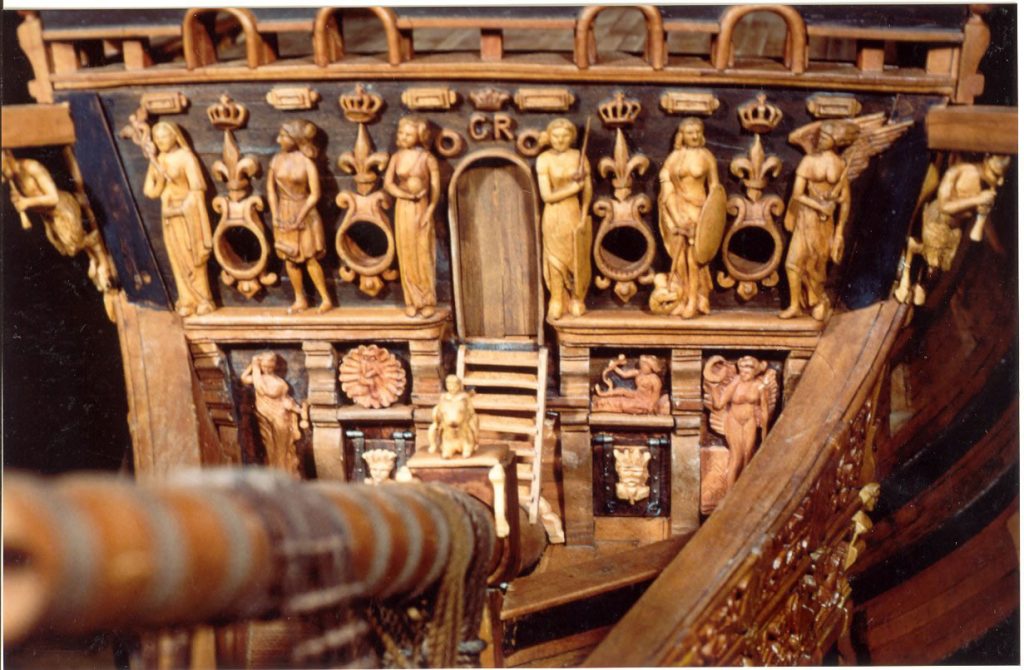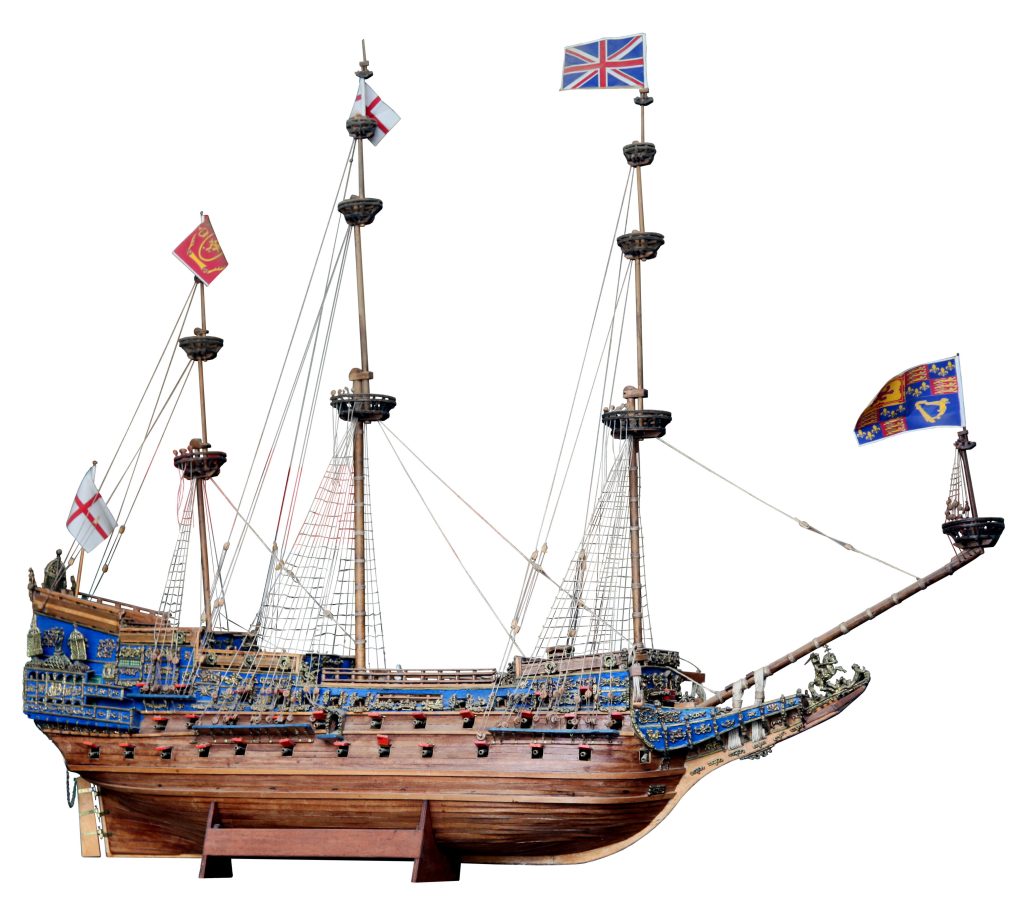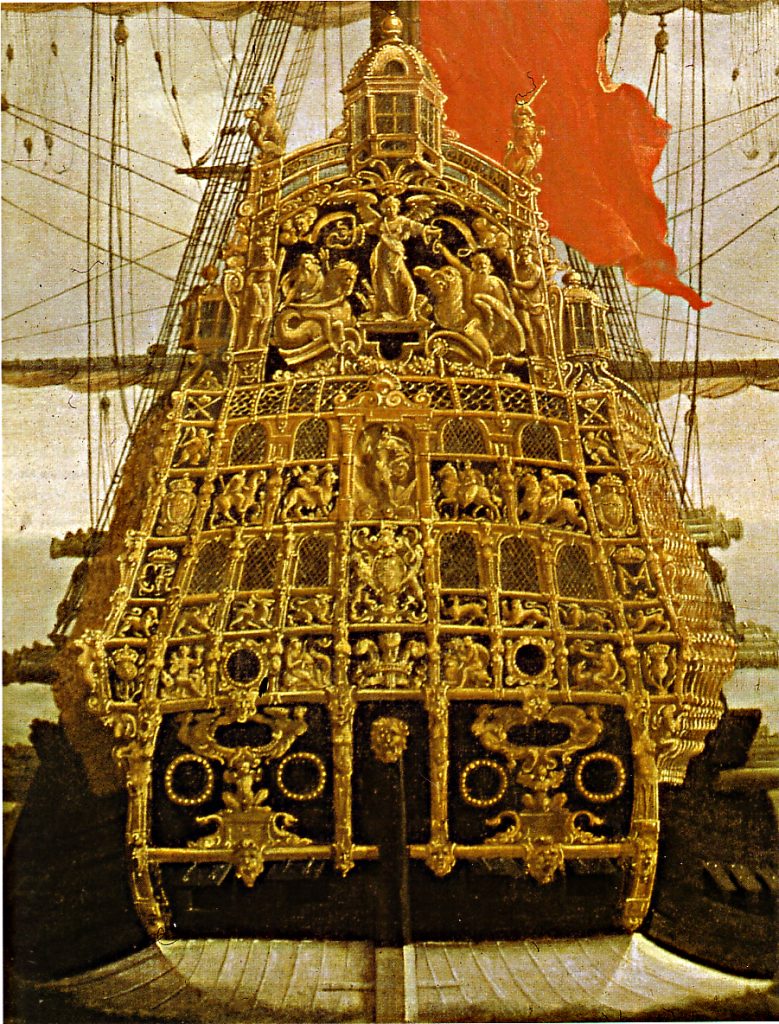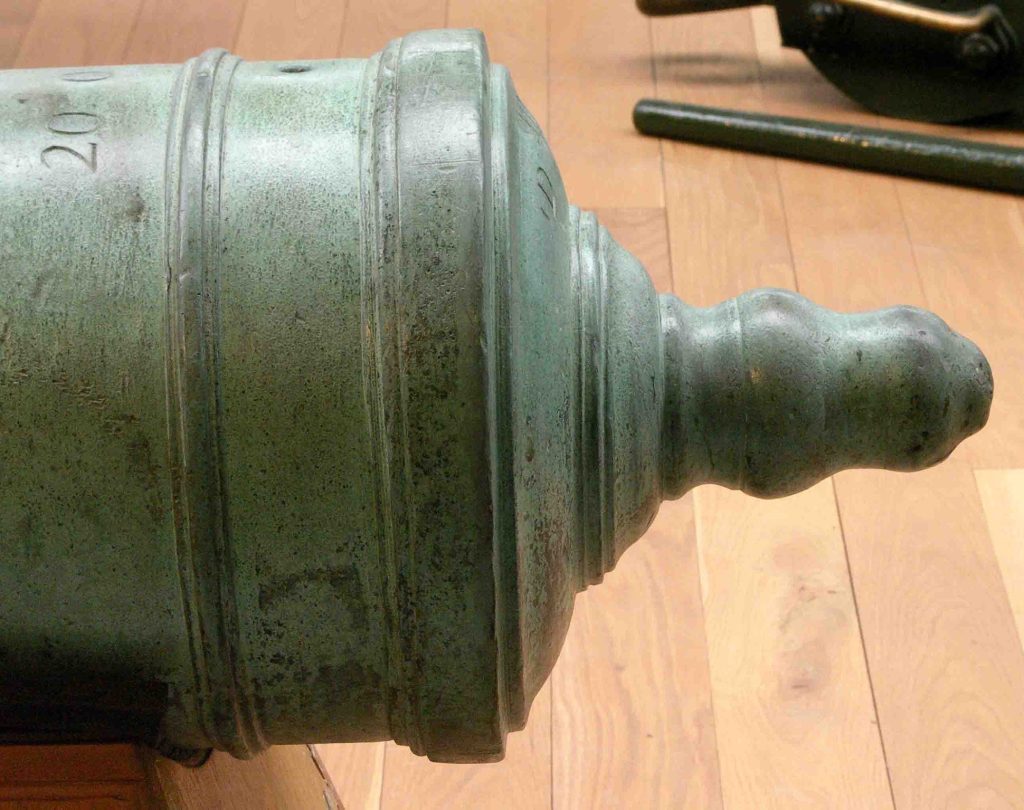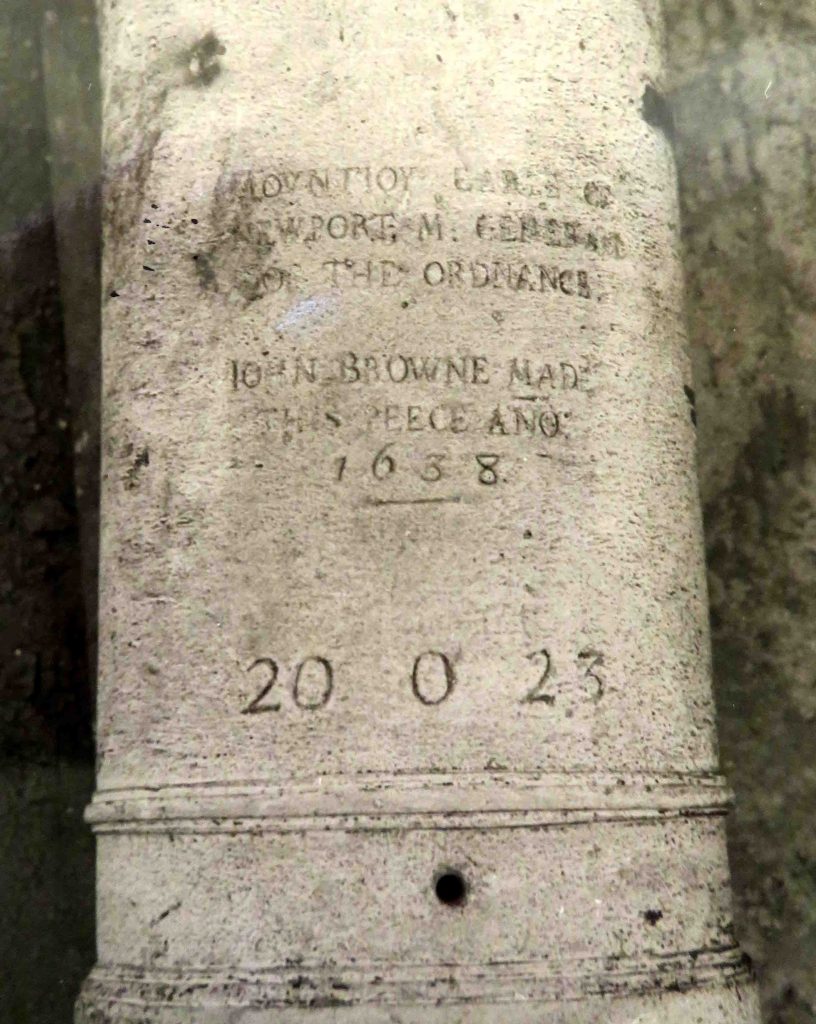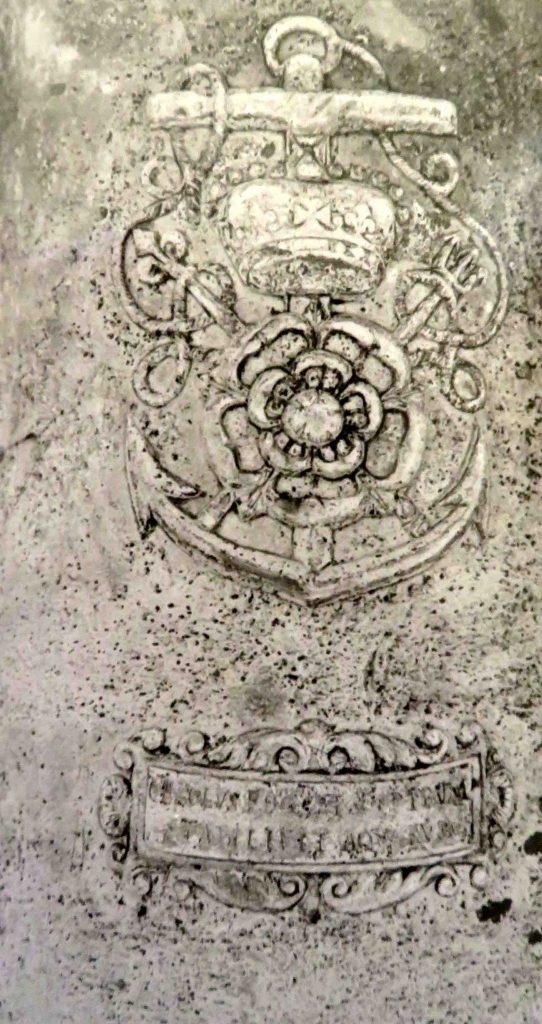1638 Demi-Culverin Drake Sovereign of the Seas
The most powerfully armed ship in the world with cannons made in Horsmonden
We know of one remaining cannon and are on the look out for any more!
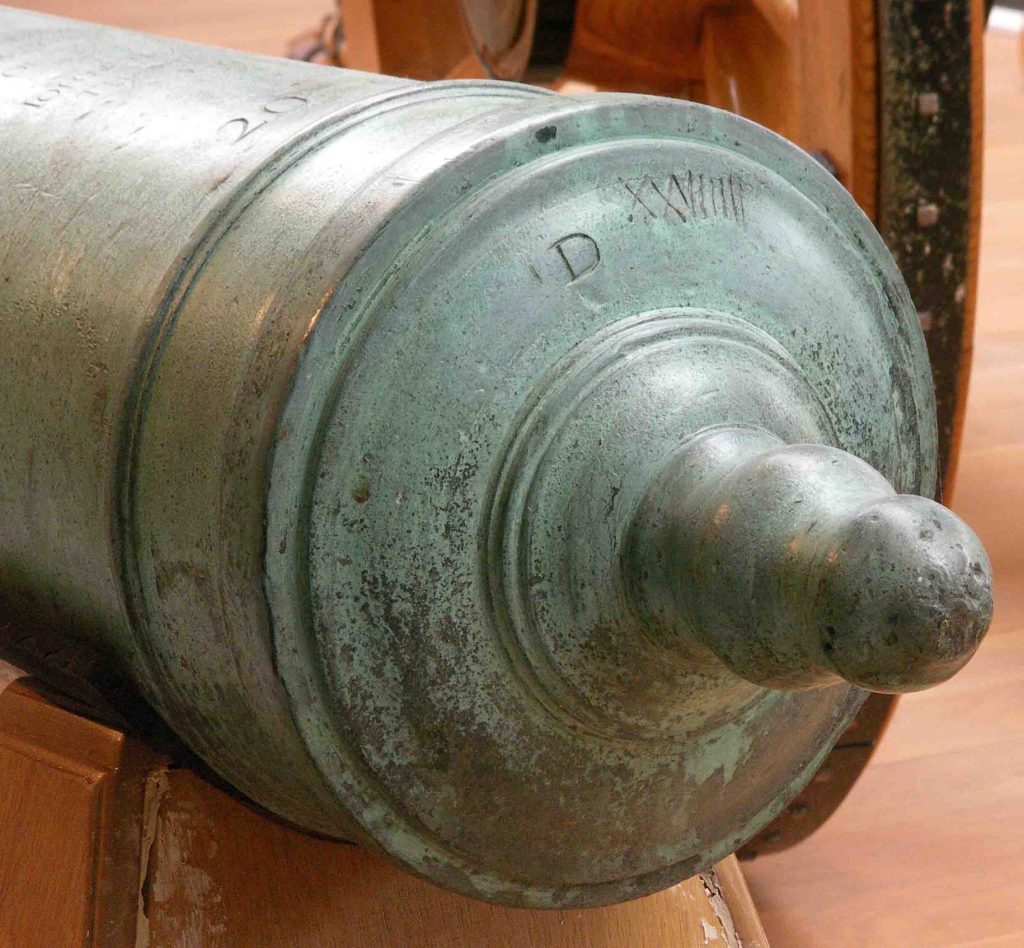
Sovereign of the Seas was a 17th-century warship of the English Navy. She was ordered as a 90-gun first-rate ship of the line of the English Royal Navy, but at launch was armed with 102 bronze guns at the insistence of the king. It was later renamed HMS Sovereign, and then HMS Royal Sovereign at the Restoration of Charles II. The elaborately gilded stern ordered by Charles I of England meant enemy ships knew it as the “Golden Devil”. She was launched on 13 October 1637, and served from 1638 until 1697, when a fire burnt the ship to the waterline at Chatham.
Charles I ordered 102 bronze cannon, to ensure it was the most powerfully armed ship in the world; these were made by John Browne. Sovereign of the Seas had 118 gun ports and only 102 guns. The shape of the bow meant that the foremost gun ports on the lower gun deck were blocked by the anchor cable. Consequently, the fore chase – the guns facing forward – occupied the next ports. There were two demi-cannon drakes – one port, one starboard – some 11.5 feet (3.5 m) long, weighing together five tons (5000 kg). They had a bore of 6.4 to 6.75 inches (16.3 to 17.1 centimetres) and fired a shot weighing 32 to 36 pounds (15 to 16 kilograms), using around ten pounds of gunpowder.
In the third ports from the bow, there were two 11-foot (3.4 m) demi-cannon drakes weighing, together, 4.3 tons (4300 kg). Behind them were twenty cannon drakes, nine feet long, and weighing in all 45.7 tons (45700 kg). In the third port from the stern were two more 11-foot (3.4 m) demi-cannon drakes weighing, together, 4.3 tons (4300 kg). The last two ports on either side were occupied by the stern chase – four 10.5-foot (3.2 m) demi-cannon drakes weighing a total of 11.4 tons (11400 kg).
The middle gun deck had heavy fortified culverins – that is, guns short for their bore – fore and aft. There were two 11.5-foot (3.5 m) pieces, weighing 4.8 tons (4800 kg), in the fore chase; four 11.5-foot (3.5 m) pieces, weighing 10.2 tons (10200 kg), in the stern chase. Immediately behind the fore chase were two demi-culverin drakes, eight to nine feet (2.4 to 2.7 m) long, weighing some 1.9 tons (1900 kg). Then came twenty-two 9.5-foot (2.9 m) culverin drakes weighing a total of 30.4 tons (30400 kg).
On the upper gun deck there were two 10-foot (3.0 m) fortified demi-culverins in the fore chase and two in the stern chase, both pairs weighing 2.8 tons (2800 kg). Between them there were twenty-two demi-culverin drakes, eight to nine feet (2.4 to 2.7 m) long, weighing over 21 tons (21000 kg) in total.
There were eight eight-to-nine-foot (2.4 to 2.7 m) demi-culverin drakes weighing 7.7 tons (7700 kg) in the forecastle; another six weighing 5.7 tons (5700 kg) on the half-deck. The quarter-deck carried two six-foot demi-culverin drake cutts – a cutt, again, being a shorter version of a gun – weighing 16 hundredweight (726 kg). Then there were another two six-foot culverin cutts, weighing 1.3 tons (1,179 kg), aft of the forecastle bulkhead. In all, Sovereign of the Seas carried 155.9 tons (141,430 kg) of guns – and that did not include the weight of the gun carriages. Altogether they cost £26,441 13s 6d including £3 per piece to have the Tudor rose, a crown and the motto: Carolvs Edgari sceptrvm aqvarum – “Charles has established Edgar’s sceptre of the waters” – engraved on them. The gun carriages, made by Matthew Banks, Master Carpenter for the Office of Ordinance, cost another £558 11s 8d.
By 1642, her armament had been reduced to 90 guns. Until 1655, she was also exceptionally large for an English vessel; no other ships of Charles were larger than Prince Royal.
Lower deck
Broadside 20 × cannon drakes (42-pdrs)
Stern chasers 4 × demi-cannon drakes (32-pdrs)
Bow chasers 2 × demi-cannon drakes (32-pdrs)
Luffs 2 × demi-cannon drakes (32-pdrs)
Middle deck
Broadside 22 × culverin drakes (18-pdrs)
2 × demi-culverin drakes (9-pdrs)
Stern chasers 4 × culverins (18-pdrs)
Bow chasers 2 × culverins (18-pdrs)
Upper deck
Broadside 22 × demi-culverin drakes (9-pdrs)
Stern chasers 2 × demi-culverins (9-pdrs)
Bow chasers 2 × demi-culverins (9-pdrs)
Quarter deck
6 × demi-culverin drakes (9-pdrs)
Poop deck
2 × demi-culverin drakes (9-pdrs)
Forecastle
8 × demi-culverin drakes (9-pdrs)
2 × culverin drakes (18-pdrs);
90 guns (1642);
100 guns (1660).
Keyfacts
Type: Demi-Culverin Drake
Gunfounder: John Browne
Cast: 1638
Material: Fine Metal
Weight: 20-0-23
Shot: Approx. 9 pounds
Distinctive markings: C R plus Rose and Crown on an anchor and number D XVIIII (19). MOUNTIOY EARLE OF NEWPORT M. GENERALL OF THE ORDNANCE. JOHN BROWNE MADE THIS PEECE ANO 1638.
Ship: HMS Sovereign of the Seas
Discovered: Unknown
Current Location: Woolwich
Photos: Ruth Rhynas Brown
Notes by Ruth Rhynas Brown
“When Richard Phillips died, the Office of Ordnance were left with only one gun-foundry capable of casting bronze guns. After various options were examined, John Browne, King’s founder of iron ordnance, offered to turn one of his ironworks in Kent into a foundry for casting bronze guns. The works were converted in 1634. It took a year or two to sort out the teething problems but by the late 1630s Browne embarked on the project to cast the guns for the great ship, Sovereign of the Seas. For this, the works had to be enlarged but out of the 102 guns cast for the Sovereign, 96 bronze guns, including cannon of seven, demi-cannons and culverins, weighing between 45 and 57 cwt- were cast by Browne in the space of a few months. Of the guns cast, only a single demi-culverin drake remains, with its elaborate coat of arms in the Royal Artillery collection at Woolwich.”
